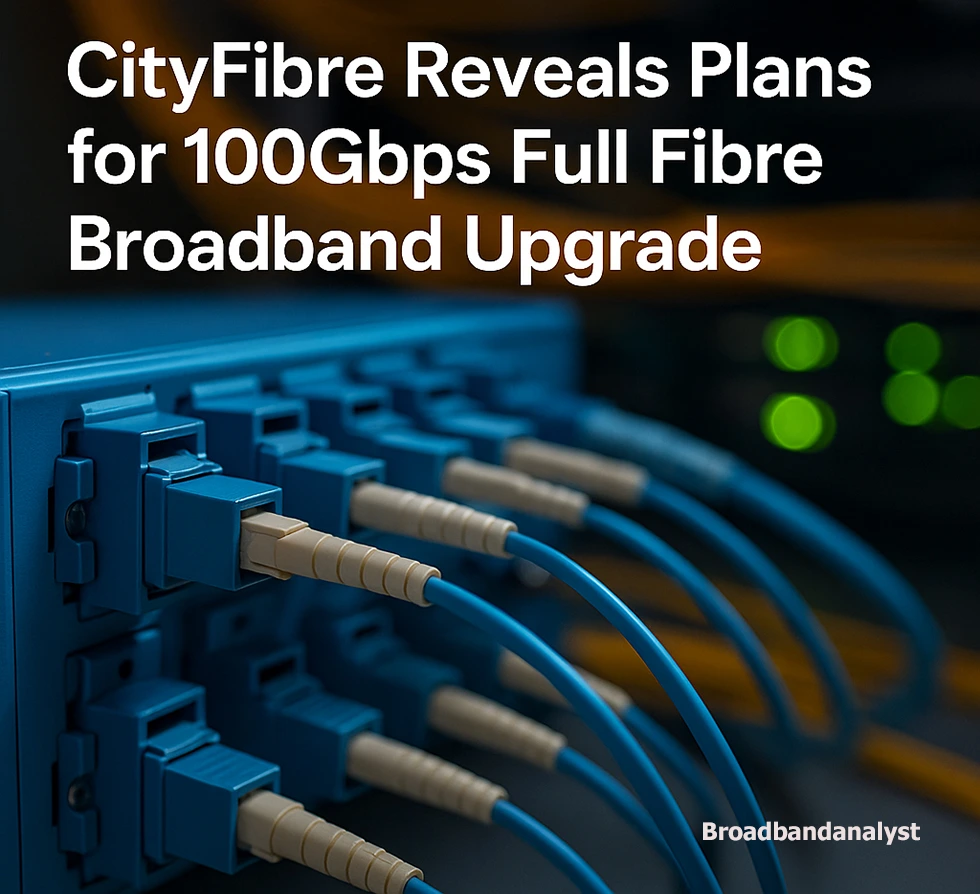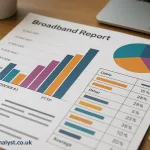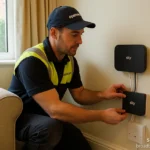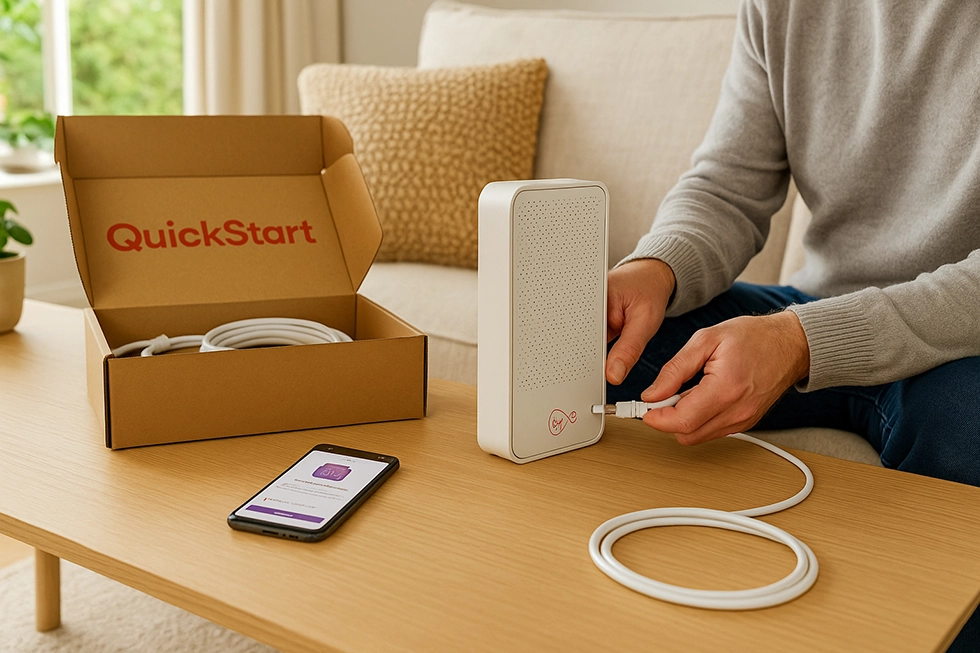CityFibre is getting ready for the next big leap in broadband. Its full fibre (FTTP) network already covers about 4.5 million homes and can handle speeds up to 10Gbps. Now, the network provider is planning to upgrade even further, with future technology like 50G-PON and 100G-PON expected to roll out in the 2030s. This means more capacity and better performance in the long run.

Full Fibre Upgrades and Faster Speeds
Over the last couple of years, CityFibre has been busy upgrading its fibre network. They’ve moved from older GPON technology to a newer, faster system called XGS-PON. This switch started in May 2023 and was completed by mid-2025. Thanks to this upgrade, their full fibre network (FTTP) can now handle much higher speeds—up to 10Gbps in both directions.
Because of this, CityFibre can now offer faster speed options to the broadband providers that use its network. These include new 2.5Gbps and 5.5Gbps plans, which ISPs can then offer to their customers. In fact, Sky Broadband was one of the first to start selling the 5.5Gbps package in June 2025.
That said, most homes won’t see the full benefit of those top speeds just yet. Many websites and apps still aren’t built to use that much bandwidth, and your devices or Wi-Fi setup might also slow things down. Even with a 1Gbps connection, it’s often hard to hit the maximum speed—though platforms like Microsoft and Steam are getting better at supporting faster downloads.
CityFibre Gets Boost from Big ISPs and International Investors
CityFibre’s network is used by several well-known UK broadband providers, including Vodafone, TalkTalk, Zen Internet, and Sky Broadband. However, not all of these ISPs are live in every area that CityFibre covers just yet.
Behind the scenes, CityFibre is funded by some of the world’s biggest investment groups—like Antin Infrastructure Partners, Goldman Sachs, Mubadala, and Interogo Holding. With this kind of financial backing, the company has serious momentum.
In fact, it recently raised £2.3 billion to help push its network into more parts of the UK. This funding will also support potential mergers or partnerships in the broadband space. Over time, CityFibre aims to reach 8 million homes across the country—that’s about 30% of all UK households.
Future Fibre Boost – 50Gbps and Beyond
CityFibre isn’t stopping at 10Gbps. As more people rely on fast internet for work, streaming, gaming, and smart devices, the company is planning ahead for even faster fibre technology. It’s working on a 15 to 20-year plan to bring in the next generation of fibre speeds—called 50G-PON and 100G-PON—sometime in the 2030s.
Their Chief Technology Officer, David Tomalin, says these future upgrades could follow the same process they used to move from GPON to XGS-PON. While he suggested the next upgrade might take just 12 months, the last one actually took closer to two years, not counting the early testing they did in York. Most of the heavy lifting happened during 2024 and 2025, and that experience could help speed up the next upgrade.
But these changes aren’t just about faster speeds. Moving to 50G or 100G PON helps the network handle more traffic smoothly, run more efficiently, and support more users without slowing down. It also gives CityFibre an edge over big names like Openreach and Virgin Media when it comes to offering faster, more advanced broadband services to ISPs.
50Gbps or 100Gbps – Which Upgrade Comes First?
CityFibre has big plans for faster broadband, but the exact upgrade path hasn’t been locked in yet. The company hasn’t decided whether to move up to 50G-PON first or go straight to 100G-PON. That choice will depend on a few things—like how quickly the network grows, how ready the infrastructure is, and whether the new equipment becomes widely available.
Right now, 50G-PON hardware is just starting to reach the market, and no one in the UK has rolled it out on a large scale yet. One major challenge is the backhaul—the core part of the network that carries data between cities and data centres. It needs to be powerful enough to support the extra traffic that 50G or 100G connections would create. Without that, even if homes are connected with super-fast fibre, the speed boost won’t make much difference.
More Networks Preparing for Next-Gen Fibre
CityFibre isn’t the only broadband company looking at next-gen fibre speeds. Netomnia has already taken an early lead by rolling out a 50G-PON network—making it the first in the UK to do so. This shows that other fibre providers are also starting to prepare for the next big leap in broadband technology.
What sets CityFibre apart is that it’s one of the few openly talking about its long-term upgrade plans. That gives us a better picture of where the UK broadband market might be headed in the next 10 years.
While many networks are still working on rolling out XGS-PON and building up their customer numbers, CityFibre is already planning for the future. Its goal is to create a faster, more flexible fibre setup that can handle the growing demand for speed and reliability in the years to come.
Improving Speed, Stability, and Network Capacity
Fast download speeds are important, but they’re only one part of what makes broadband reliable. What really affects everyday performance are things like network congestion during busy hours, how many users are sharing the same connection (contention), how quickly data responds (latency), and how strong your Wi-Fi is inside your home.
By planning ahead for 50G and 100G PON upgrades, CityFibre isn’t just chasing higher speed numbers—it’s making sure its network stays stable, efficient, and ready to handle more users without slowing down. These changes will help keep things running smoothly behind the scenes, even as demand keeps growing.
This shift is part of a bigger move across the UK to get rid of older copper-based networks and fully switch to modern full fibre. As more people stream in 4K, use cloud services, work from home, or play online games, stronger fibre networks with more capacity will be key to avoiding slowdowns and keeping things working well for both homes and businesses.
Shaping the Future of UK Broadband
CityFibre is clearly thinking long-term. With its network already upgraded to XGS-PON and faster broadband plans available through its partners, the company is now planning even bigger changes. Its next move—to 50G and 100G PON—could bring a huge leap in what fibre broadband can handle.
The timing will depend on how the market develops, but the goal is clear: to build a faster, more reliable, and future-ready fibre network. For broadband providers and customers, this isn’t just about speed—it could change how broadband works, how it’s priced, and what kind of experience people get from it in the years ahead.










